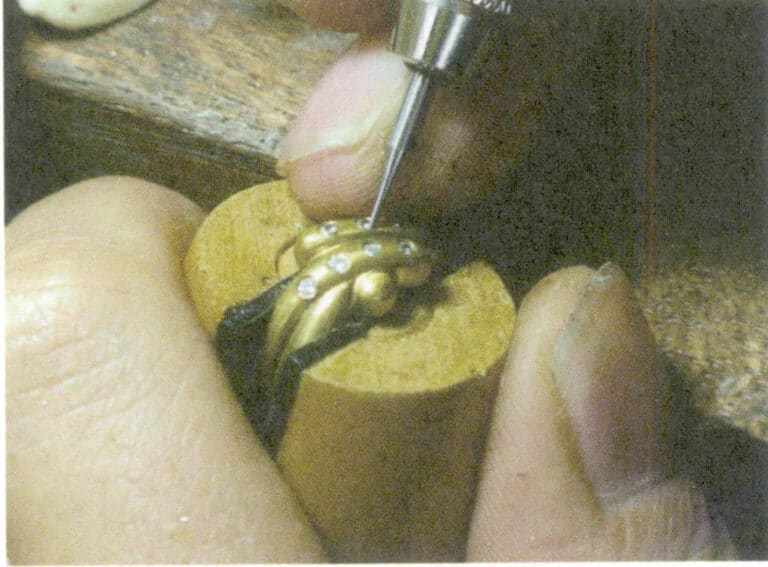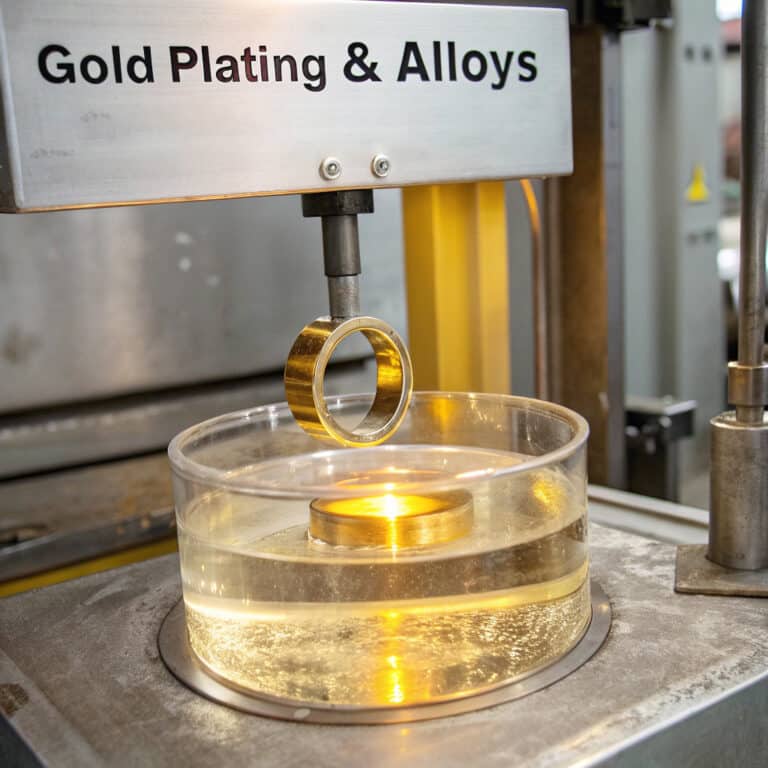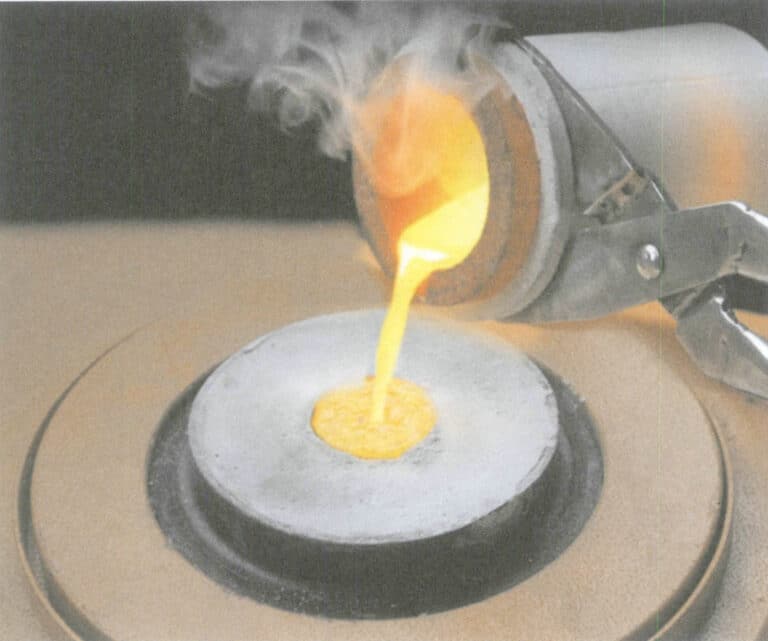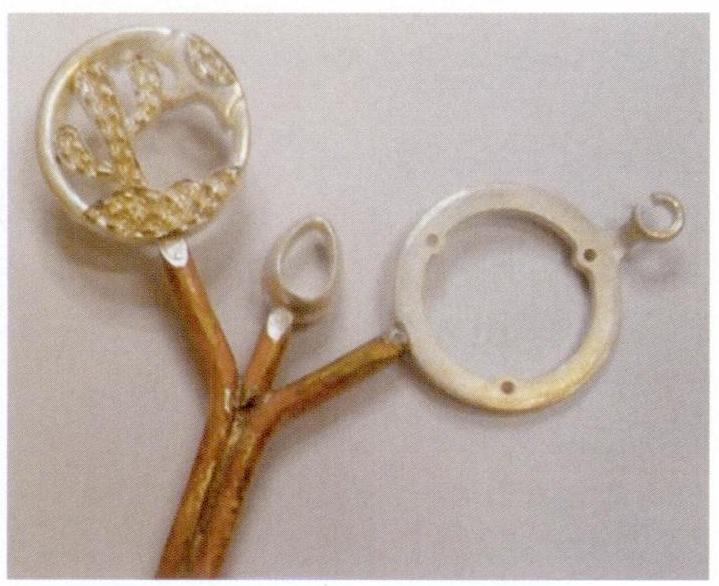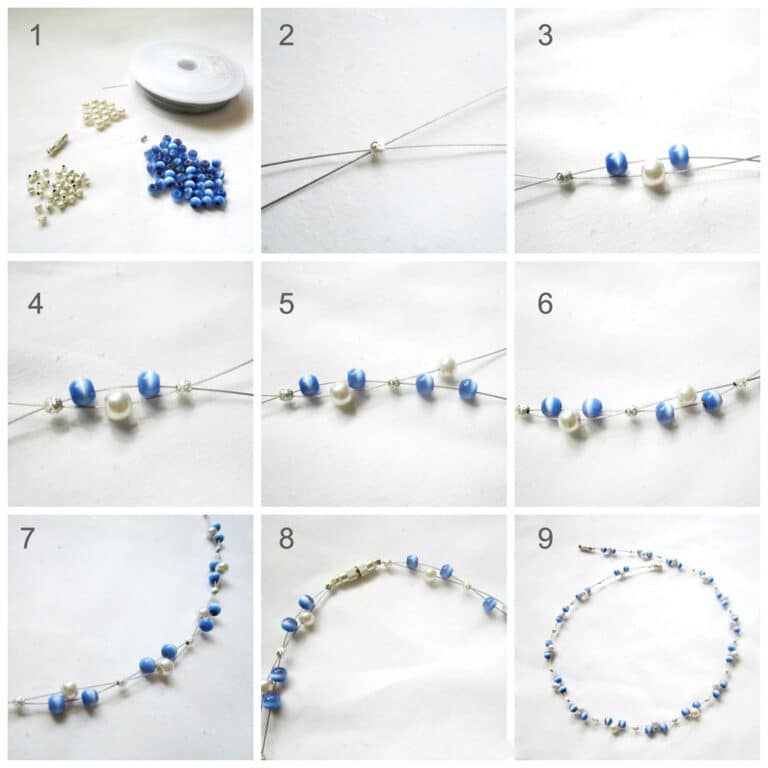How to inspect and identify artificial stones used in jewelry?
6 Features to Keep an eye out for
It is well known that different types of gemstones undergo various production processes, which add a “stamp” of production techniques to the original characteristics of the gemstones, resulting in varying degrees of changes in their physical and chemical properties and internal structures. This raises higher requirements for identification work and increases the difficulty. However, due to the significant difference in value between natural and synthetic gemstones, identifying their differences is particularly important.
In terms of identification, for distinguishing synthetic gemstones, the general approach is to first conduct an overall observation, then perform physical and chemical tests, and finally draw conclusions.
Artificial gemstones often provide important information to appraisers regarding appearance, helping to identify distinguishing features and determine their authenticity. The observation content and methods are as follows.
Sisällysluettelo
Section I Color
Color is one of the main criteria for evaluating the economic value of gemstones. The ideal body color of natural gemstones is extremely rare and expensive, hence the practice of artificially altering the color of flawed colored gemstones or creating beautiful artificial gemstones to achieve a good balance of quality and price.
Color is a type of electromagnetic wave with a certain wavelength. The color of artificial gemstones is the mixed color of the residual light that gemstones transmit or reflect after selectively absorbing light of different wavelengths within the visible light spectrum. Therefore, the color of artificial gemstones can be divided into three types: reflected color, transmitted color, and color temperature. People often evaluate the color grade of artificial gemstones based on hue, saturation, brightness, and color shape.
(1) Hue
Various spectral colors are used to characterize gemstones. Gemstone colors are divided into two categories: colored and non-colored. Non-colored includes black, white, and gray; colored includes red, orange, yellow, green, cyan, blue, and purple, usually represented by the main wavelength.
(2) Kirkkaus
The gemstone’s visual transmission rate represents a color’s brightness level. It is proportional to the amount of light entering the human eye. Color strength depends on the refractive index of the gemstone, the rationality of the gemstone’s design, the smoothness of the gemstone’s surface, and the depth of the gemstone’s color.
(3) Saturation
Refers to the vividness of a color, that is, the saturation of each main wavelength (monochromatic light) in the visible spectrum. The higher the saturation of monochromatic light (i.e., the percentage it occupies in mixed light) , the more vivid the gemstone’s color.
(4) Color distribution
Refers to the form and distribution of color in gemstones.
(5) Evaluation Criteria
When observing the color of gemstones, it is necessary to use top lighting (reflected light) against a white background to examine the gemstone’s surface. Transmitted light should not be used to determine color; the light source is best if it is sunlight or equivalent. This is because gemstones (especially those with red tones) can appear slightly different under incandescent and fluorescent light.
(6) Evaluation Standards
Based on factors such as the purity of the gem color tone, color intensity, color saturation, and color shape quality, the color of gems can be classified into three levels: good, medium, and average.
Section II Luster
The luster of a gem refers to its ability to reflect visible light from its surface, which depends on the gem’s refractive index and surface smoothness. In other words, the luster of a gem is the sum of the amount of reflected and transmitted light. The luster of gems can be divided into:
(1) Metallic luster
A type of luster displayed by metallic surfaces where the gem’s refractive index is greater than 3. Examples include natural gold, natural silver, and hematite.
(2) Timantin kiilto
The refractive index of gemstones is generally around 2.0-2.6, as shown by the type of luster displayed on the surface of diamonds.
(3) Sub-Diamond Luster
The refractive index of gemstones is around 1.9-2.0, lying between diamond and glass luster, such as zircon.
(4) Glass Luster
The refractive index of gemstones is at 1.54-1.90, exhibiting a luster similar to that reflected by glass surfaces. Most gemstones, such as crystal, corundum gemstones, emeralds, and their synthetic counterparts belong to this type.
(5) Sub-glass luster
The refractive index of gemstones is at 1.21-1.54, with a reflective ability slightly lower than glass luster but greater than earthy luster (which gemstones do not possess) , such as opal and fluorite.
(6) Special luster
Some gemstones have special structures that can create unique lusters different from those mentioned above, such as pearly luster (a hazy iridescence) , silky luster (caused by fibrous aggregates, like tiger’s-eye) , greasy luster (like amber) , and asphaltic luster (like jet and other black gemstones) .
The luster of gemstones often changes after being polished, with most increasing.
Section III Density
Density refers to the mass per unit volume. Density = Weight/volume
Different substances have different densities. The density size depends on the constituent elements’ atomic weight, the atomic or ionic radius, and the packing method.
(1) Calculation method
By analyzing the composition and structure of the gemstone, calculate the sum of the atomic weights of the elements in the gemstone’s crystal chemical formula (M) , the number of molecules in the unit cell corresponding to the crystal-chemical formula (Z) , and the unit cell volume (V) . According to the formula, the density of the gemstone can be calculated (Dm)
Dm=MZ×1.6608•10-24/V
(2) Weighing method
① Weigh the mass of the gemstone in the air (m) ;
② Weigh the mass of the gemstone in liquid (m1) ;
③ Calculate the mass difference between m and m1(m-m1) ;
④ Result representation.
Calculate the density value based on the formula.
ρ=m/m-m1×ρ0
In the formula:
ρ is the density of the sample at room temperature (g/cm3) , m is the mass of the sample in air (g) ;
m1 is the mass of the sample in liquid (g) ;
ρ0 is the density of the liquid at different temperatures(g/cm3) .
(3) Comparison method
① Prepare a liquid of equal weight with a density of 2.57 g/cm3, 2.67 g/cm3, 3.05 g/cm3 , 3.32 g/cm3 for use;
② Use tweezers to completely immerse the cleaned sample in the known density liquid;
③ Rest the tweezers against the inner side of the liquid container to release air bubbles;
④ Immerse the sample in heavy liquid and release the tweezers to estimate the density of the sample.
- The sample sinks, indicating its density is greater than that of the heavy liquid;
- The sample floats, indicating its density is less than that of the heavy liquid;
- The sample floats in the heavy liquid, and its density is almost equal to that of the heavy liquid.
Based on the speed at which the sample rises or falls in the heavy liquid, continuously change the heavy liquid until its density is very close to that of the sample.
Section IV Special optical effects
The special optical effects of gemstones are produced by the reflection (refraction, scattering) of inclusions on light, selective absorption of light, or interference of light.
1. Special optical effects produced by light reflection (refraction, scattering)
① Cat’s eye effect
Under illumination, faceted gemstones display silk-like light bands that can move parallel on their surface, resembling the iris of a cat’s eye. Gemstones such as chrysoberyl, tourmaline, beryl, apatite, quartz, pyroxene, and synthetic cat’s eye often exhibit the cat’s eye effect.
② Star Light Effect
The curved gemstones, when illuminated, display intersecting light bands on their surface, resembling the starlight in the night sky, hence called the starlight effect. There are three-ray, four-ray, six-ray, ten-ray, and twelve-ray variations, etc. Gemstones exhibiting the starlight effect include diopside, garnet, ruby, sapphire, and synthetic starlight red blue sapphire, among others.
③ Nugget Effect
The gemstone contains a large number of opaque or translucent solid inclusions such as mica, pyrite, hematite, metal flakes, etc. arranged in parallel twin crystal planes, which reflect a star-like, bright, and vivid color phenomenon under light. Examples include sunstone, star quartz, and Nugget stone.
2. Special effects produced by selective light absorption
Color change effect: The phenomenon where gemstones exhibit different colors under different light sources is called the color change effect. Examples include alexandrite, sapphire, Tourmaline, synthetic alexandrite, etc.
3. Special effects produced by the interference of light
① Play-of-color effect
When a gemstone has a lamellar twinning structure or contains countless regularly arranged spherical silica particles, the iridescent flashing phenomenon exhibited under light is called the play-of-color effect. Examples include labradorite, opal, synthetic opal, etc.
② Halo effect
The air or moisture filling the cracks, cleavage, or fissures in gemstones produces interference color stripes iridescence when illuminated, known as the halo effect, which is often seen in quartz.
4. Artificial iridescence effect
Gemstone enhancements can exhibit unique optical effects not found in natural gemstones, such as the iridescent phenomenon of metallic coatings.
In addition, artificial special optical effects, such as artificial cat’s eye effect, starlight effect, color-changing effect, etc., as long as careful observation, it is different from the special optical effects naturally formed in natural gems, and looks particularly bright, unnatural, not lively, and stiff.
Copywrite @ Sobling.Jewelry - Custom korujen valmistaja, OEM ja ODM korut tehdas
Section V External Features
1. Surface Features
After the gem is treated with improved processes, its surface often retains microscopic features not found in natural gems. . Such as the surface of high temperature and high pressure treatment of gems visible corrosion pit spots; there will be color spots on its surface after high-energy particle irradiation. Dyed or filled, pigments or fillings distributed in cracks or pores of gemstones; Strong acid (alkali) purification treatment, there will be network cracks on the surface of gems (jade) .
The surface features of diamonds synthesized by the crystal catalyst method can vary due to changes in growth conditions. When the temperature is too low, the edges of the crystal often protrude while the center is concave, and some may have an entire concave surface; when the temperature is too high, the newly formed crystal faces will dissolve, with the edges dissolving first, causing the entire crystal to become rounded; under appropriate temperature conditions, the crystal faces are smooth, and the crystal edges are straight. Additionally, on the synthesized diamond {111} face, triangular protrusions and spiral patterns may appear on cubic or octahedral crystal faces, extending in the {110} direction.
2. Formation Features
High-quality artificial gemstone crystals are often influenced by production equipment, control systems, growth orientation, and crystallization speed during their growth process, especially in the crystal forms of synthetic gemstones, artificial gemstones, and reconstructed gemstones.
(1) Characteristics of artificial gemstones formed by flame fusion method
Crystals grown by the flame fusion method, when in a continuously rotating state, will have varying thicknesses if the temperature distribution is uneven horizontally and vertically, severely affecting the crystal’s shape after crystallization. If the feeding speed, temperature, and descent speed are well-coordinated during the growth process, the resulting pearshaped crystals will have a convex top surface; if coordination is poor and heat is insufficient, the pear shape will have a flat top surface; when severely unbalanced, with a significant lack of heat and excessive oxygen pressure, the top surface of the pear shape will be concave, and crystals with a concave top experience high stress and are prone to cracking. Crystals grown by the flame fusion method often exhibit arc-shaped growth lines and color bands internally, and sometimes cracks appear vertically along the crystal axis (such as in synthetic spinel) .
(2) Characteristics of artificial gemstones formed by hydrothermal method
The hydrothermal method can grow relatively perfect high-quality large crystals, similar to natural gemstones. Factors such as the supersaturation of the solution, the properties and concentration of mineralizers, the temperature and temperature difference in the growth zone, the pressure and filling degree within the container, seed crystal orientation, culture materials, impurities, and convection baffles will all affect the size, quality, and shape of the crystals. However, due to different environmental influences during the growth process, synthetic crystals may exhibit varying degrees of defects, such as twinning, inclusions, dislocations, etch tunnels, and growth striations. Based on the appearance characteristics of twinning, they can be classified into four types: concave twin, polyhedral twin, bulging twin, and fluff-like twin.
The red (blue) gemstone crystals synthesized by hydrothermal methods are mostly thick plate-like or plate-shaped, with common forms being hexagonal bipyramids{224(_)1} and {224(_)3}, followed by rhombohedra {011(_)1}, occasionally seen are complex trigonal bipyramids {358(_)1}, {134(_)1} and parallel double faces {0001} . Various growth patterns are commonly developed on the hexagonal bipyramidal crystal faces, with more common ones being tongue-shaped or droplet-shaped growth hills, step-like growth terraces, grid-like growth textures, and irregular growth striations with occasional radial fibrous stripes. Although the colors of hydrothermally synthesized corundum gemstones are uniform and the crystals are lustrous and transparent, some crystals may exhibit cracking phenomena. For example, the cracking of synthesized ruby crystals can occur in two ways: one along the seed crystal face and the other presenting irregular net-like cracking on the (2243) crystal face, while the cracking of synthesized yellow sapphire crystals can occur in three situations: first,
two groups cracking along the direction of the crystal rhombohedron; second, cracking along the center of the seed crystal plate; and third, cracking along the interface between the seed crystal and the crystal.
(3) Flux method artificial gemstone morphological characteristics
The gemstones grown by the flux method, similar to the hydrothermal method, have smaller crystal sizes. High internal stress often leads to crystal fragmentation and destructive phase transitions. The crystal surfaces are often coated with flux components, featuring straight growth stripes, growth hills, or spiral lines.
(4) Characteristics of artificial gemstones produced by the pulling method
The gemstones grown by the pulling method are cylindrical, with seed crystal traces, and the interfaces have dislocations and curved growth stripes.
(5) Characteristics of artificial gemstones produced by the melt-guided method
The crystals grown by the melt-guided method are shaped crystals. This method can directly pull out wires, tubes, rods, sheets, plates, and various other special shapes of crystals from the melt, and their dimensions can be accurately tailored to meet usage requirements. However, since the melt-guided method uses seed crystals, like the crystal-pulling method, the grown crystals show traces of seed crystals.
(6) Characteristics of artificial gemstones produced by high temperature and high-pressure method
Synthetic diamonds grown by high-temperature and high-pressure methods generally have cubic and octahedral crystal forms. During the growth process, if the pressure remains constant and the temperature gradient is large, the crystal form is an octahedron surrounded only by {111} faces, often exhibiting {110}, {113} and other high-index crystal faces; if the temperature remains constant and the pressure increases, the diamond crystal form will change from octahedral to cubic; when the pressure remains constant and the temperature increases, the diamond crystal form will change from cubic to octahedral. Diamonds synthesized by the “BARS” method exhibit a hexoctahedral crystal form or show slight distortion in the crystal form (e.g., uneven development, missing a certain crystal face, or uneven crystal faces, etc.) .
Section VI Internal Features
The internal features of gemstones, especially the characteristics of inclusions, are the most distinguishing, followed by internal fractures, cleavage, and diffusion halos.
1. Inclusions
Inclusions are the most significant for identification, especially in distinguishing natural gemstones from synthetic ones and identifying the same type of gemstones from different origins. They can be classified based on their state of existence into three types: gaseous, liquid, and solid, and based on their generation sequence into three categories: primary, syngenetic, and epigenetic.
(1) Natural Gemstone Inclusions
Artificially modified gemstones often retain (residual) inclusions of natural gemstones (or synthetic gemstones) . These are inclusions of the same or different types contained within the natural gemstone during crystallization. These inclusions are randomly combined within the main crystal, with diverse arrangements, sizes, and shapes. Studying inclusions is a fascinating and highly educational topic in gemology. The patterns of inclusions can provide valuable information about the physical and chemical environment during the growth of the main crystal; the inclusions of gemstones with different origins are unique to them, so the inclusions of specific gemstones from unique locations often characterize that gemstone and its origin.
① Classification of Inclusions by Phase
- Liquid and gaseous inclusions are located in the main crystal’s voids, which can take various forms, including empty voids, round, oval, wedge-shaped, or antler-shaped. They vary in size, with larger ones visible to the naked eye. In comparison, smaller ones may not be seen under a microscope, appearing as tiny dots distributed regularly or irregularly. When numerous, they can cause the main crystal to appear cloudy or milky, affecting its transparency.
- Solid inclusions can be crystalline or amorphous. Amorphous (glass) inclusions are also stored in voids or cavities, filling the entire space or part of it, usually requiring a microscope to observe. It is more common in gemstones synthesized by magma condensation or flame melting, such as basalt, feldspar in rhyolite, leucite, ordinary pyroxene, quartz and so on.
Crystals or crystalline inclusions in solid inclusions, fully crystallized, or in granular, needle-like, flaky, scaly, fine powder forms, and microcrystalline, are often arranged irregularly. However, some may be arranged in parallel, such as the parallel arrangement of calcite flakes in diopside. Crystalline inclusions often arrange in parallel, meaning they are parallel to a certain crystal face, and maintain a crystallographic direction relative to the main crystal. For example, the crystalline inclusions in cobalt-copper pyroxene are needlelike or thin flaky, each parallel to the edges of a crystal zone and the C-axis, with one face of this zone parallel to the (100) face of the ancient copper pyroxene, which exhibits a metallic luster due to the presence of these fine flakes on the (100) face.
Various solid inclusions, sometimes present in large quantities within crystals, can cause the main crystal to change color. For instance, zeolite is often colored red by numerous fine hematite flakes. In contrast, ordinary pyroxene is frequently colored green or black by magnetite, which can sometimes significantly impact the mineral composition.
② Classification of the formation sequence of inclusions
Natural gemstone inclusions can be classified based on the age relationship between the main crystal and the guest crystal as follows:
- Primary inclusions. These form before the main crystal’s growth and coexist with earlier generation mineral crystals or molten residues, such as actinite and biotite in emeralds, epidote in quartz, pyrrhotite in diamonds, spinel in rubies. In summary, primary inclusions are always minerals.
- Syngenetic inclusions. They grow simultaneously with the main crystal and are contained within it, belonging to the same geochemical parent rock components as the main crystal. Such as aquamarine in albite, Muscovite, quartz, Pyralspite and tourmaline; Such as andalusite, corundum, garnet and quartz rutile; Peridot, garnet and pyroxene in diamonds; Calcite and dolomite in rubies, emeralds and spinels.
The inclusions also formed by demelting also belong to the syngenetic state. For example, the demelted albite in orthoclase causes the orientation of the moonstone inclusions, or the demelted acicular rutile causes the “filamentous” effect (starlight) in corundum gems. Demelting is the separation of the initial homogeneous solid melt (mixed crystal) into two distinct crystal phases. Demelting usually occurs when the solid solution is cooled, and the demelting mineral inclusions are often arranged in crystalline orientation.
Based on the orientation types of syngenetic mineral inclusions coexisting with their main crystal, they can be distinguished as either epitaxial or co-axial. If the guest crystal has a different chemical composition from the host crystal but shares a similar structural relationship (one-dimensional or two-dimensional lattice) , if the difference between the two minerals is only structural (having the same chemical composition) , then the geometric crystal framework attached to the host crystal is referred to as co-axial. For example, the hexagonal graphite in cubic diamonds is such a case.
- Epigenetic inclusions. They do not settle within the main crystal until they are fully formed, meaning that foreign solutions (contaminated by foreign substances) seep into cracks or cleavages, and during drying, they precipitate their undissolved materials, some becoming amorphous and some forming crystalline inner walls. These fissures are often filled with foreign materials, which are quite common in gemstones and have not healed. Limonite is an epigenetic inclusion in many gemstones. Many residual injecting agents left in artificially treated gemstone cracks also belong to epigenetic inclusions.
During the crystallization process, the previously precipitated minerals often become unstable again, deformed or completely dissolved in the new environment. The causes of this instability vary greatly, resulting in the emergence of phased development of minerals under interaction. The complex formation process of gemstones and their inclusions often have its obvious signs. For example, the grainy appearance of Sri Lankan reddish-brown garnet is caused by numerous tiny apatite crystals in the paisley structure; The Columbian emeralds of Muzo have yellowish-brown calcium-cerite columns. Calcite or dolomite flake twin-crystals and paisley rutile small “needle nets” in Myanmar rubies; Red uranium-pyrochlore crystal in sapphire of Khmer Balling region; Can be used as the characteristics of the gemstone origin.
Inclusions in gemstones often have captivating shapes and create special effects on the appearance of the gemstones, attracting the interest of buyers and collectors and holding significant value for scientific research.
(2) Inclusions in synthetic gemstones
Every invention and innovation of synthetic replicas must face challenges and find new identification methods. Even synthetic gemstones have various examples and decisive factors for distinguishing “natural” from “artificial” gemstones. Even if synthetic gemstones simulate the natural gemstone formation process to a considerable extent, specific differences can still be used for identification. One of the most significant and usually infallible methods is the microscopic examination of inclusions.
① Inclusions in synthetic gemstones
- Glass: Besides irregularly shaped impurities, countless bubbles of varying sizes exist. The consistency of bubble size and the flatness of the structure, along with prominent swirling contours accompanied by large bubbles, are undoubtedly reliable indicators of glass.
- Plastic: Flowing texture and its gray interference color, fibrous tiny and opaque white particles resembling “fingerprint-like objects.”
- The “fingerprint” pattern in strontium titanate by melting flame method and the colorful strain pattern produced by strain; The “plume cracks” and the arrangement of spheres or linear particles of unmelted residues in yttrium algarnet; The reconstructed turquoise has a typical granular “euryale powder” or “cereal” structure; Synthetic cubic zirconia has bubbles, fluxes and so on.
② Assembled stone
There are often countless light-colored dots and needle-like objects, bubbles, and a network of cracks from the contraction of large bubbles on the contact surface.
③ Inclusions in synthetic gemstones
“Plume cracks”, “chain” droplets of flux residue, tubes, “breadcrumbs”, curved growth lines, numerous bubbles, “serpentine patterns”, “honeycomb” or “chicken coop” structures (synthetic opals) , silliberyllium in synthetic emeralds, seed wafers. The synthetic sapphires grown by the floating zone method by the Japanese fine factory attract attention for the non-uniformity of the fuzzy paisley, which reminds people of the hazy interior scene of Kashmiri sapphires.
- High-temperature, high-pressure method for synthesizing gemstones: jadeite has no “jade quality” and appears red under a color filter.
- Gemstones grown by hydrothermal method: gas-liquid inclusions, solid-liquid inclusions, seed crystals, and debris on the vessel’s walls.
- Flame fusion method for synthesizing gemstones: no gas-liquid two-phase inclusions, may have glass bubbles, un-melted powder, dense arc-shaped growth rings or color bands, star lines are clear and do not widen or brighten at the intersections; the table of faceted gemstones is parallel to the C-axis, showing pleochroism, with colors deepening from the inside out; synthetic spinel exhibits optical anomalies.
- Melt method for growing gemstones: There are crucible materials such as Mo, W, Pt, Ir, etc., with occasional gas inclusions and incompletely melted powder-like raw material, Cloud-like bubble aggregates and banded inclusions appear around the seed crystal. In the pulling method, elongated gas inclusions may be observed. In the rotating pulling method, very fine, curved, arc-shaped growth patterns, with occasional subtle, smoke-like, whitish cloud-like substances, can be seen.
- Zone melting method and floating zone method for synthesizing gemstones: Internal growth and color zoning appear chaotic and curved, with bubbles in the crystal.
- Guided mold method for synthesizing gemstones: The gas inclusions that give rise to pores, and the defects of the seed crystals also enter the crystals in which they grow.
④ Improving gemstones
The inclusions in improved gemstones, apart from the existing inclusions before improvement, are mostly generated during the improvement process. See Table 6-1 for details from the website: https://sobling.jewelry/improving-gemstones-the-art-and-science-of-enhancing-jewels/
2. Murtuma
Artificial modification processes can cause the original fractures of gemstones to heal or disappear and widen or increase the original fractures. Healed fractures often have healing marks (mostly glassy) , while newly added fractures are mostly burst patterns, erosion patterns, or erosion pits. These newly added network cracks are concave and often filled with filling materials.
3. Color Phenomenon
Gemstones that have undergone energy activation and chemical reaction processing often experience solid inclusions of native color being eroded and foreign ions entering, causing color atoms (ions) to undergo internal and external diffusion, forming color bands, color halos, color spots, and other different color characteristics, unevenly distributed within the gemstone, or distributed on the surface, surface layer, or scattered within the gemstone, or distributed in the fractures of the gemstone, especially when the dye is completely distributed in the fractures and pits of artificial gemstones.





